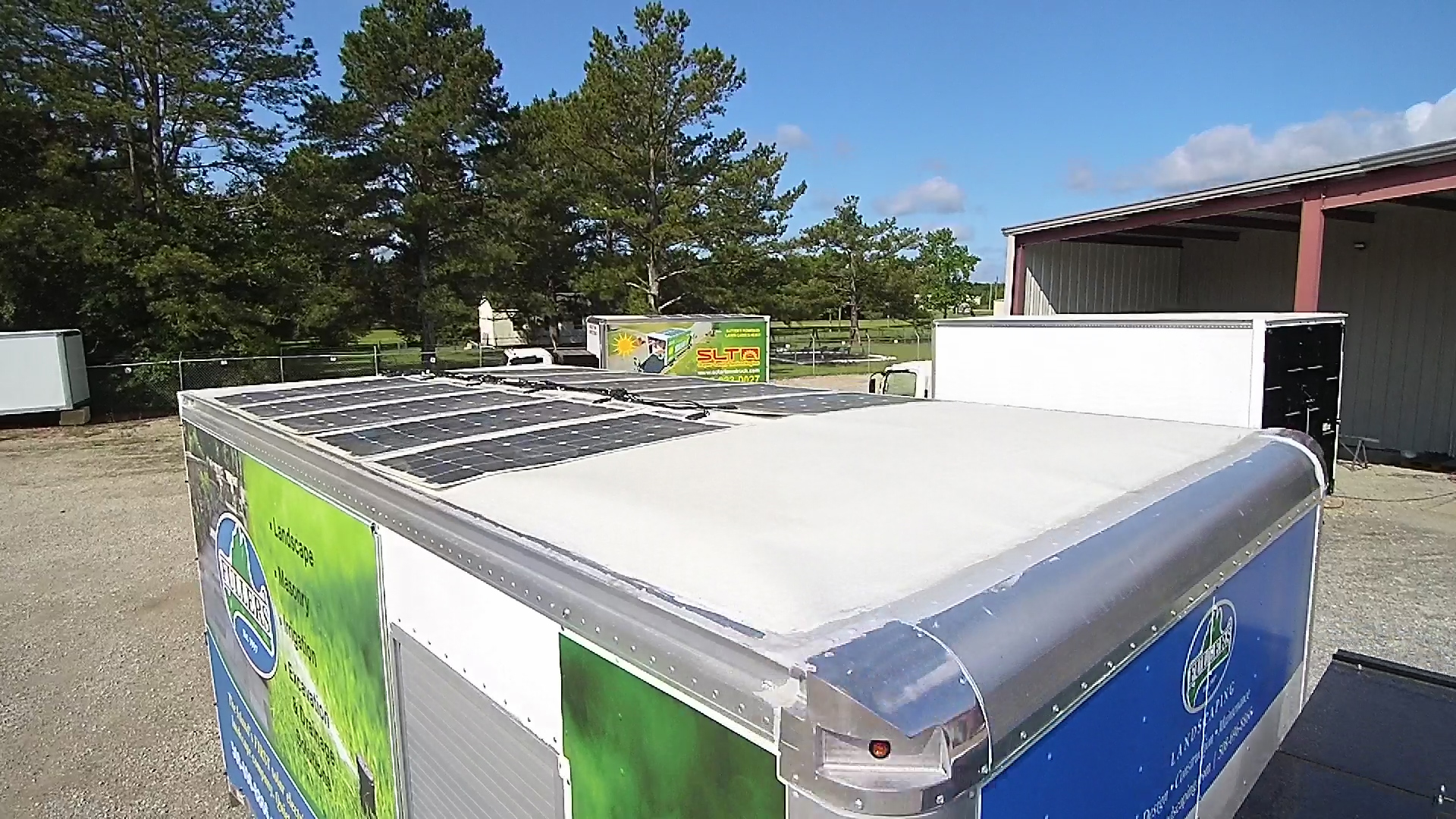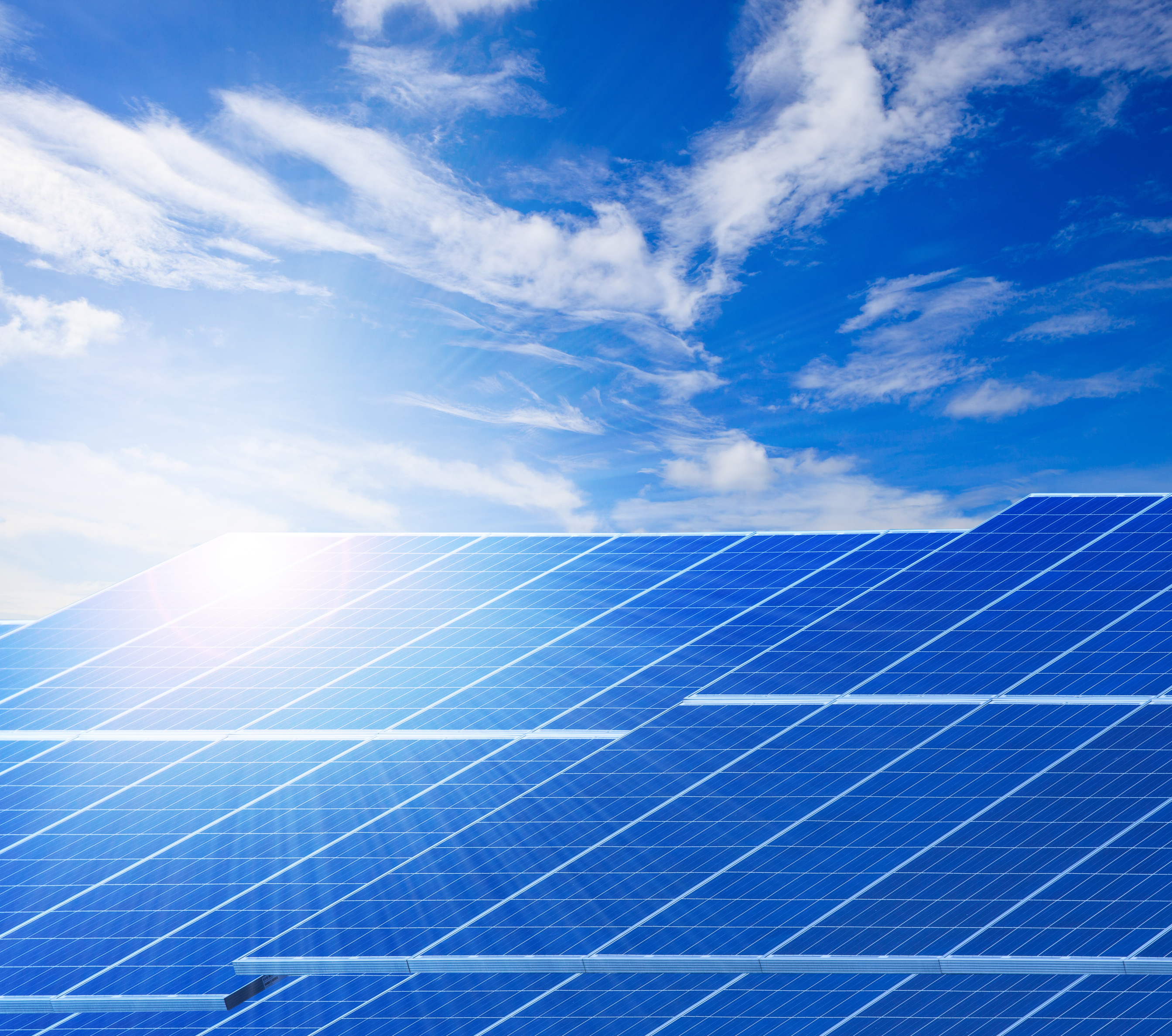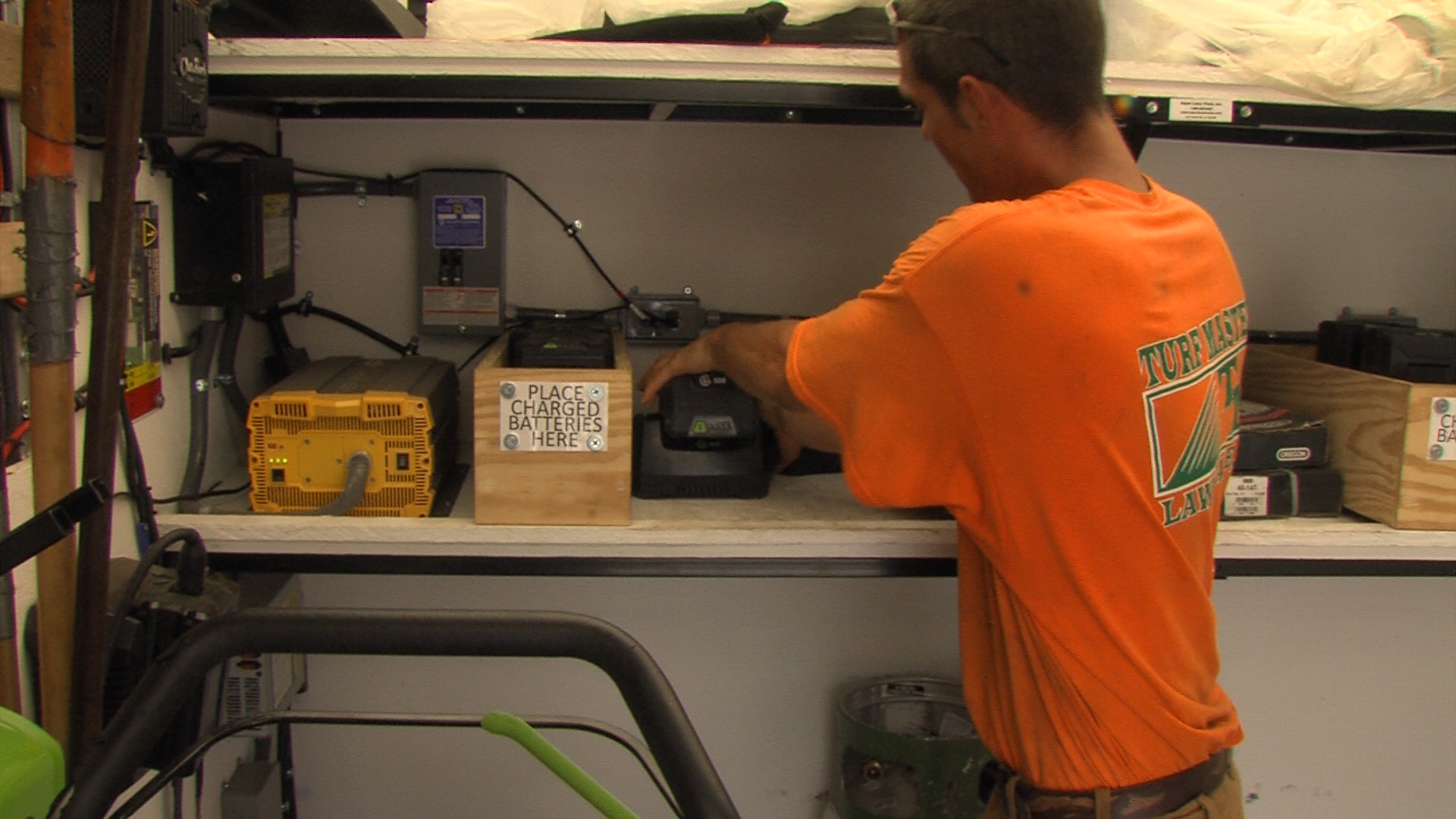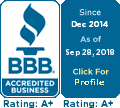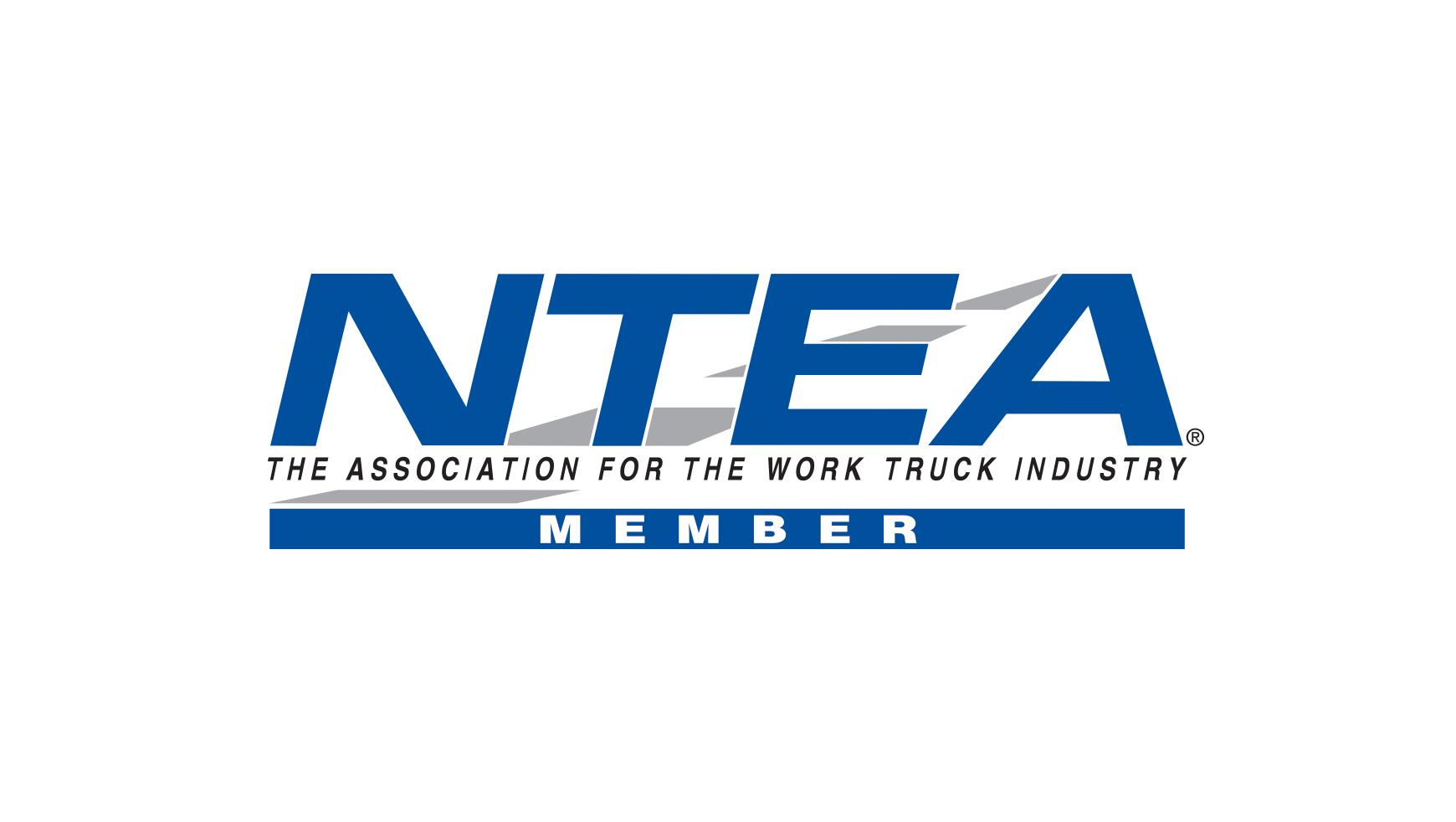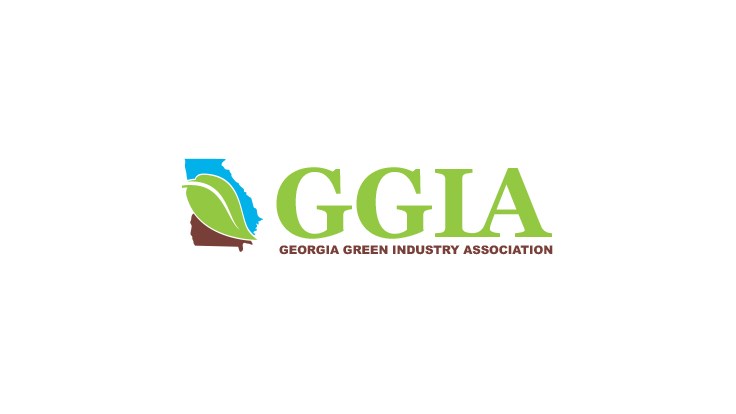30% Tax Credit Makes 2019 the Year of Solar Power for Landscape Business Owners (Updated 2021, 2023)
*****Update: 30 % Solar Tax Credit 2023
The federal government provides a 30% tax credit for solar power systems built in years 2022 through 2033. This program was expanded via the Inflation Reduction Act of 2022. This summary is based on information found at https://www.energy.gov/eere/solar/articles/federal-solar-tax-credit-resources
What Does a Solar Power Generation System Cost?
The size of the solar system will certainly impact the cost. Let’s consider a small, off-the-grid solar charging system producing 3-4 KW per day with battery storage of 5 KW.
Let’s assume the cost of the solar panels, solar controller, power inverter, distribution panel, load monitoring equipment, battery bank, shore power charger, electrical outlets, hardware, and labor cost $20,000 up front.
Claim your 30% tax credit of $6000. ($20,0000 x 30% = $6,000) The solar system has an actual capital cost of $14,000.
Our experience has proven that a lawn service crew can easily save $4000 per year on gasoline purchases by replacing the gas-powered string trimmers, blowers, hedge trimmers, edgers and chain saws on just ONE CREW with battery-powered lawn equipment.
The fuel cost of operating just one backpack blower for 500 hours is $1500/year. That’s why we think $4000 per year in lower gasoline bills for hand held equipment is a conservative estimate of annual fuel savings per lawn crew.
Reducing your gasoline bill by $4000 per year per lawn maintenance crew allows you full recovery of the up-front cost of a solar system in 3.5 years.
Please note: the ROI explained in this article has not taken into account any of the cost savings associated with the reduced cost of mechanical repairs and maintenance of typical lawn care equipment.
The fact is that battery-powered equipment has much lower maintenance than gasoline-powered equipment. So, our case study is a very conservative ROI based on the actual field tests we have had underway since 2017.
You can learn more about the annual cost and annual fuel savings of lawn and garden power tools by reading the case studies found at www.solarlawntruck.com.
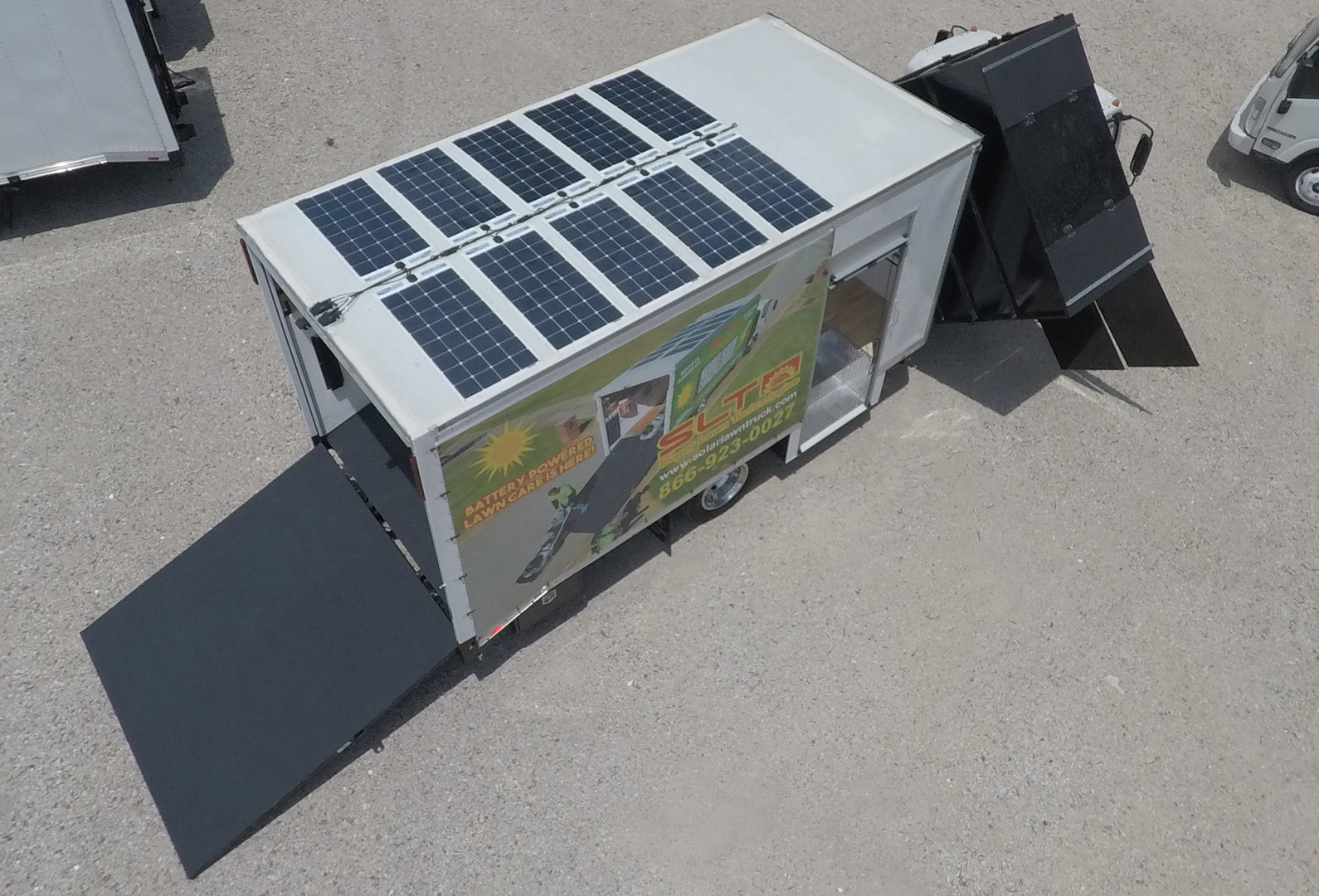
Read case studies and learn more about making the transition from gas powered to battery powered lawn equipment.
Contact Super Lawn Trucks at 866-923-0027
*****Update – Solar Tax Credit Extension – 2021
In December 2020, Congress passed an extension of the ITC, which provides a 26% for systems commencing construction in 2020-2022, 22% for systems commencing construction in 2023, and 10% for systems commencing construction in 2024 or thereafter. Any PV system placed in service after 2025, regardless of when it commenced construction, can receive a maximum tax credit of 10%.
Learn more at:
https://www.energy.gov/eere/solar/articles/residential-and-commercial-itc-factsheets
This means that if you purchase a Solar Lawn Truck system, you may claim up to 26% of the cost of the solar system as a tax credit. Here’s an example calculation.
Solar system cost – $17,500
Tax Credit @ 26% = $4550
Actual Costs = $12,950
This tax credit makes it more affordable than ever to make the transition to battery powered lawn equipment.
Keep in mind that tax laws change from year to year. Anytime we have a change in the administration or congress, tax laws are subject to be changed.*****
*****(From original article-2019. The article below is not intended to provide tax or legal advice.)
The Advanced Energy Project Tax Credit
When you purchase your solar generation project, 30% of the cost of the solar system can be claimed as pre-paid income tax. When you claim your tax credit, the government has helped you purchase the power generation system! The government hopes that the more of us who buy solar power systems, the lower the costs will become, and the tax credit eventually phases out.
3 Things You Need to Claim Your Tax Credit
This tax credit is available to individuals or business who purchase and place into service their solar power generation system in 2019. In order to claim your 30% tax credit, you’ll need three things:
- Receipt from the purchase of your solar power generation system in 2019
- You’ll need to complete IRS tax form 3468 when you file your 2019 tax return
- A tax liability that you need to offset. In other words, this incentive helps profitable companies or their owners who pay federal income taxes.
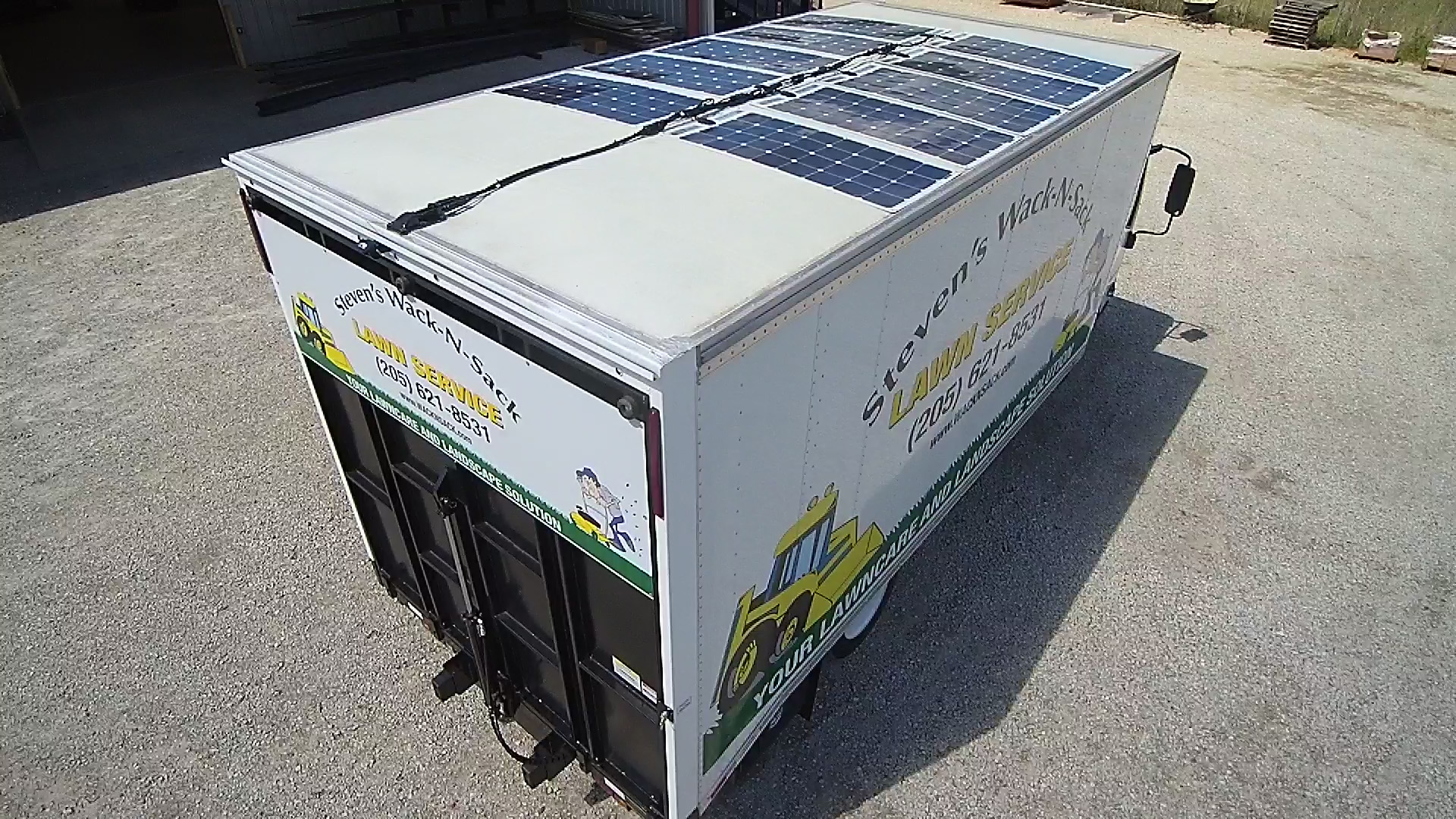
The solar power generation system you purchase could be installed on your office building, warehouse, storage lot or on fleet vehicles. The purpose of your solar generation project must be to provide electricity or to create heat for your building. The one notable exclusion to claim your tax credit is that the solar system can’t be installed to heat your swimming pool. (How do they come up with this stuff?)
This government incentive is set to begin phase-out after 2019 and the tax credit allowed drops each year after 2019. In other words, if you want to government-sponsored tax credit, you’ll get the biggest tax credit if you put your solar system into operation in 2019. The schedule of phase-out of the tax credit is always subject to change based on congressional tax policy.
All across the USA, solar power generation is catching on as a cost-effective investment to offset annual electricity bills. Solar panels are being installed on rooftops to capture FREE energy from the sun. The solar panels are connected to the home’s electrical system to provide power for the homeowner. If the rooftop solar system produces more power than the homeowner is using, the excess power can charge batteries for use when the sun is not shining. The cost of batteries to store solar energy is part of the system that is eligible for the 30% tax credit.
If you like the idea of placing solar panels on your rooftop to capture FREE energy, you’ll love this next option.
Can You Sell Your Solar Power and Make Money?
Solar power generated from your home or business roof-top system can be sold back to your power company. Special metering equipment must be installed with the solar array when your system is tied into the power grid. This metering equipment keeps up with how much power you provide to the grid. Great news…the costs of this metering equipment is also part of the eligible tax credit.
Each power company or electric membership cooperative (EMC) has unique policies of how much they will pay for your power. You’ll have to talk to your power provider to see what you’ll be paid, how big your system can be, what permits are required and more. When you look at the big picture of a solar power generation system, payback on your investment can be expected within 3 to 10 years. This “payback” is typically based on how much money you will save on future power bills, how much you save from your tax credit and how much you will save from the tax-deductible depreciation for the solar system.
Solar System Case Study – The ROI Question is Answered…
At the Super Lawn Truck manufacturing plant, we are installing a rooftop solar generation system in 2019. Let me show you the expected payback for this system.
The initial investment for the solar power generation system is $65,000. We will claim our 30% tax credit of $19,500. This reduces the cost of the solar system to $45,500 in year one.
We will reduce our power bill by $6000 per year based on the size of the solar system we are purchasing and installing. The system will be paid for in reduced power bills in 7.5 years. Not bad.
But here’s the best part. The solar system will be in service for 20 to 30 years, reducing our power bill $120,000 to $180,000 respectfully. Our company will be able to re-invest these savings into new product development, lower pricing for our customers or better pay for our workers.
These projections are based on our current power bills where we pay .14 cents/kilowatt hour during day-time peak demand. If the costs of power goes up over the next 20-30 years, our savings will be even greater.
How Does Solar Energy Help Lawn and Landscape Business Owners?
You could consider installing a solar power generation system at your business location or your home to lower your utility bills. If you do this, you’ll save some money on the power bill and create a tax credit for yourself along the way. Look at our case study above. Payback in 7.5 years. Saves us $120,000 over 20 years. That’s cool…
Landscapers are discovering a much faster way to get payback from installing a solar system.
Let’s look at your company’s electric power bill. Then look at your company gasoline bill. I’ll bet you’ll agree that you spend tons more money on gasoline than you do on electricity each year.
Since gasoline expenses are so much greater in landscape companies than electricity expenses, you can earn a much faster payback by offsetting gasoline use with FREE solar energy and electricity.
Switching from gas-powered lawn equipment to battery-powered equipment is the key idea. Recharging batteries using solar power lowers costs to a fraction of the costs of gasoline. In fact, once you buy the solar system and the batteries for the lawn equipment, your energy costs will go down 1775% compared to the cost of gasoline.
For example. Let’s look at a piece of equipment that you probably own and use every single day in your company, a 600 to 700 cfm backpack blower. Here’s the math:
- Assume you use your backpack blower 500 hours per year
- The backpack blower uses ½ gallon of gasoline per operating hour
- 500 hours x .5 gallons/hr = 250 gallons of gasoline per year
- 250 gallons of gasoline x $3.00/gallon = $750 of gasoline per year
Now let’s look at the costs to recharge batteries for a battery powered backpack blower. In our case study, we share the data collected using the 82-volt GreenWorks 600 CFM backpack blower.
- Assume we use the blower 500 hours per year
- The 5 amp/hour battery provides 35 minutes of run time
- 35 minutes / 60 minutes per hour = .583 run time hours per battery charge
- 500 hours / .583 hours per charge = 858 battery charges per year
- If you purchase electricity, the national average is .11 cents per kilowatt hour
- 5 amp hours x 82 volts = 410 watt-hours / 1000 watt-hours/kilowatt = .41 kilowatts per charge
- .41 kilowatts x .11 cents/kilowatt hour = .0451 cents (lets call it 5 cents to recharge one time)
- 5 cents/charge x 858 charges = $42.90 per year in electric cost (if you buy your power from the utility)
You can check my math with your local electrical engineer. Here’s what you will confirm…
Electricity is Cheap – Gasoline is Expensive
What would you rather spend? $750 for gasoline or $42.90 for electricity? That’s a no-brainer! One more question. What happens to the cost of electricity when you use solar panels to generate the power needed to recharge your batteries? It goes down even further! Could you imagine operating your company without a gasoline bill every week? Pretty exciting idea…
These are some of the reasons we think 2019 is the year of solar power for lawn and landscape business owners.
- Rugged and powerful lithium-ion battery powered lawn maintenance tools are available right now.
- Solar panels are the lowest price and most efficient power generation tools that they have been since being invented way back in 1954 at Bell Labs.
- The 30% federal tax credit creates a HUGE incentive for installing a solar power generation system. The tax credit begins to phase out after 2019 creating urgency in buying your system.
- Mobile solar-powered recharging of batteries is available to lawn and landscape professionals right now. This tool allows you to dramatically reduce the number of batteries you have to buy for your battery powered hand tools.
- Increasing restrictions on noise pollution has created market demand for quiet operating electric hand tools.
- Battery powered hand tools are simple to use allowing our industry to hire a broader range of employees with little to no experience operating equipment.
- Lawn and landscape operators can stop buying carburetors, spark plugs, pull cords, air filters, fuel filters and oil. This is transformational!
- The return on investment (ROI) can no longer be ignored. Let me explain these details.
What Does a Solar Power Generation System Cost?
The size of the solar system will certainly impact the cost. Let’s consider a small off-the-grid solar charging system. Let’s assume the cost of the solar panels, solar controller, power inverter, distribution panel, load monitoring equipment, shore power charger, electrical outlets, hardware, and labor cost $15,000 up front.
First, you claim your 30% tax credit of $5000. The solar system has an actual cost of $10,000.
Our experience has proven that you can easily save $2000 per year on gasoline purchases by replacing the gas-powered string trimmers, blowers, hedge trimmers, edgers and chain saws on just ONE CREW with battery-powered lawn equipment. Look back up above at the annual fuel cost of operating just one backpack blower for 500 hours and you’ll see why we think $2000 per year lower gasoline bills is a conservative estimate of annual fuel savings per lawn crew.
Reducing your gasoline bill by $2000 per year allows you full recovery of the up-front cost of the solar system in just 5 years. That payback is 33% faster than payback from displacing electricity like the example we used for the Super Lawn Truck manufacturing facility.
Please note: the ROI explained in this article has not taken into account any of the cost savings associated with the reduced cost of mechanical repairs and maintenance of typical lawn care equipment. The fact is that battery-powered equipment is much lower maintenance than gasoline-powered equipment. So, our case study is a very conservative ROI based on the actual field tests we have had underway since 2017.
You can learn more about the annual cost and annual fuel savings of lawn and garden power tools by reading the case study found here.
Tony Bass is the co-author of The E-Myth Landscape Contractor: Why Most Landscape Companies Don’t Work and What to Do About It. He is the founder of Super Lawn Truck and holds 3 US patents for equipment to improve productivity in the lawn industry. He can be reached at 866-923-0027 or via email at Tony@superlawntrucks.com .
